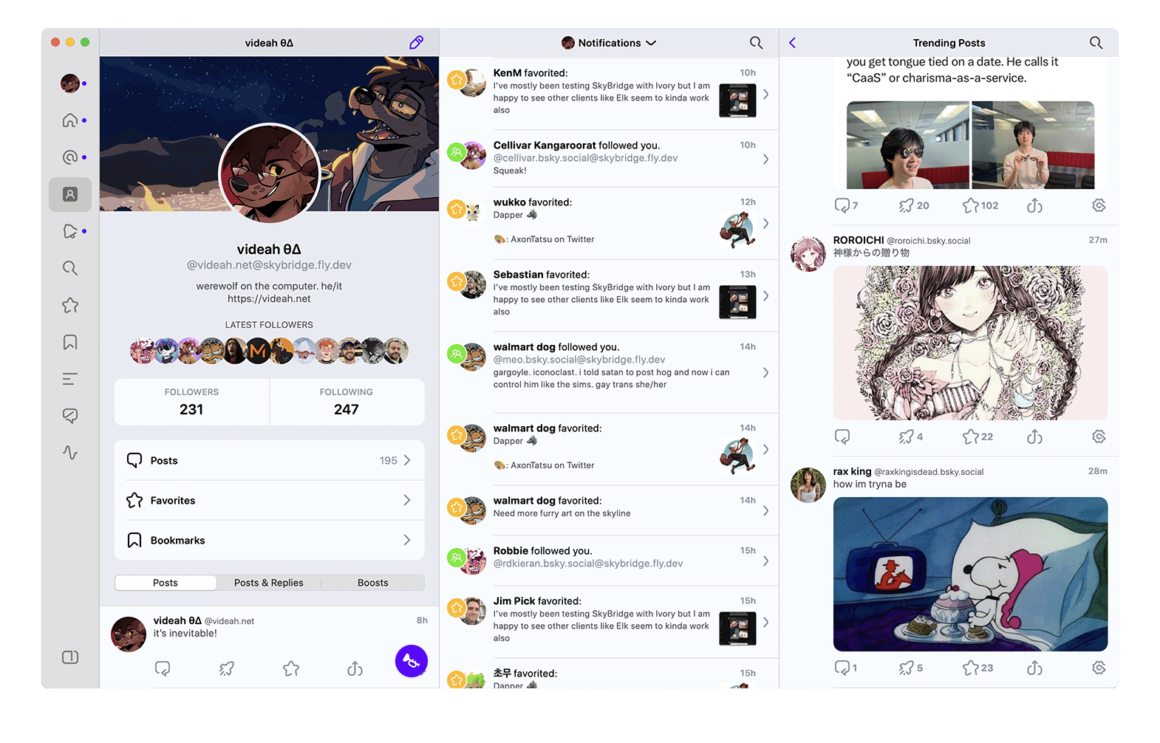The new decentralized social network, originally incubated inside Jack Dorsey-run Twitter, is backing a project that would connect — or “bridge” — Mastodon requests into Bluesky requests so that consumer apps, like Ivory, would be compatible with Bluesky, too.
The project, dubbed SkyBridge, was among the recipients of a small distribution of $4,800 in grant funding from Bluesky, distributed across projects. SkyBridge was the second-largest recipient in this current cohort, with $800 of the total.
Bluesky had announced last month that it would use some portion of its funds to fuel efforts in the developer ecosystem via the AT Protocol Grant program. From a financial standpoint, the program is fairly insignificant, as it’s only doling out $10,000 in grants, with $4,800 already distributed. That’s not enough to found a new company in this space, but it represents a way to encourage developers who may have wanted to dig into the new AT Protocol anyway. It also serves as an early signal of the kind of development work Bluesky supports — something that could help drive adoption among developers who have been burned by Twitter and its changing priorities.
Other program recipients are doing valuable work as well.
For example, Blacksky Algorithms is building a suite of services to provide custom moderation services for Bluesky’s Black users. Others are building Bluesky consumer apps, developer tools, analytics resources, and more.
But SkyBridge is particularly interesting because it could potentially open the small startup to a wider audience. Unlike Mastodon and other decentralized apps powered by the older ActivityPub protocol, Bluesky is developing a new, decentralized social networking protocol. Unfortunately, for end users who have begun exploring the open source social networks broadly known as the “fediverse,” Bluesky’s decision to build on a different protocol means users have to switch apps to access Bluesky’s network. They can’t use their preferred Mastodon app to browse Bluesky content, that is.
If successful, SkyBridge could change that, as it would be able to translate Mastodon API calls to Bluesky API calls. The bridge is currently being tested on Ivory on iOS and Mac; it’s the Mastodon app from the company that previously developed a popular third-party Twitter app called Tweetbot. Notes SkyBridge’s developer @videah.net on Bluesky, the project is currently undergoing a significant rewrite from Dart to Rust, which is why its GitHub repo hasn’t seen much activity lately.
Still, he thinks the work is promising.
“It’s already proving to be much more stable, hoping to show it off soon,” videah posted on Bluesky when sharing the news of the grant.
Happy to say I received a grant from Bluesky to help with work on SkyBridge!
Also a good time to announce that it’s going through a significant rewrite from Dart -> Rust, which is why the repo hasn’t seen much activity lately. It’s already proving to be much more stable, hoping to show it off soon!
— videah θΔ (@videah.net) Apr 24, 2024 at 8:28 PM
Today, Bluesky has nearly 5.6 million users, while the wider ActivityPub-backed fediverse has over 10 million users. Instagram Threads (which is integrating with ActivityPub) now has more than 150 million monthly active users, Meta announced this week during earnings.
The move to bridge Bluesky and Mastodon has been the subject of some debate as of late. People have disagreed on how bridging should be done, or whether a bridge should be built at all. Another software developer, Ryan Barrett, was the recipient of some backlash on GitHub when building another bridge called Bridgy Fed, which would be opt-out by default — meaning Mastodon posts would show up on Bluesky even if the post’s author hadn’t opted into this. He readjusted his plans to build a discoverable opt-in instead, which would allow users to request to follow accounts on the different networks.
With its backing of SkyBridge, Bluesky is signaling a desire to blur the lines between Mastodon and Bluesky.
Eventually, people may not need to think about what protocol an app runs on, just like no one thinks about their email client using SMTP, POP3, or IMAP. And in an ideal outcome, people could connect to friends on any social network, regardless of its underpinning, and see their friends’ replies in return, too.





